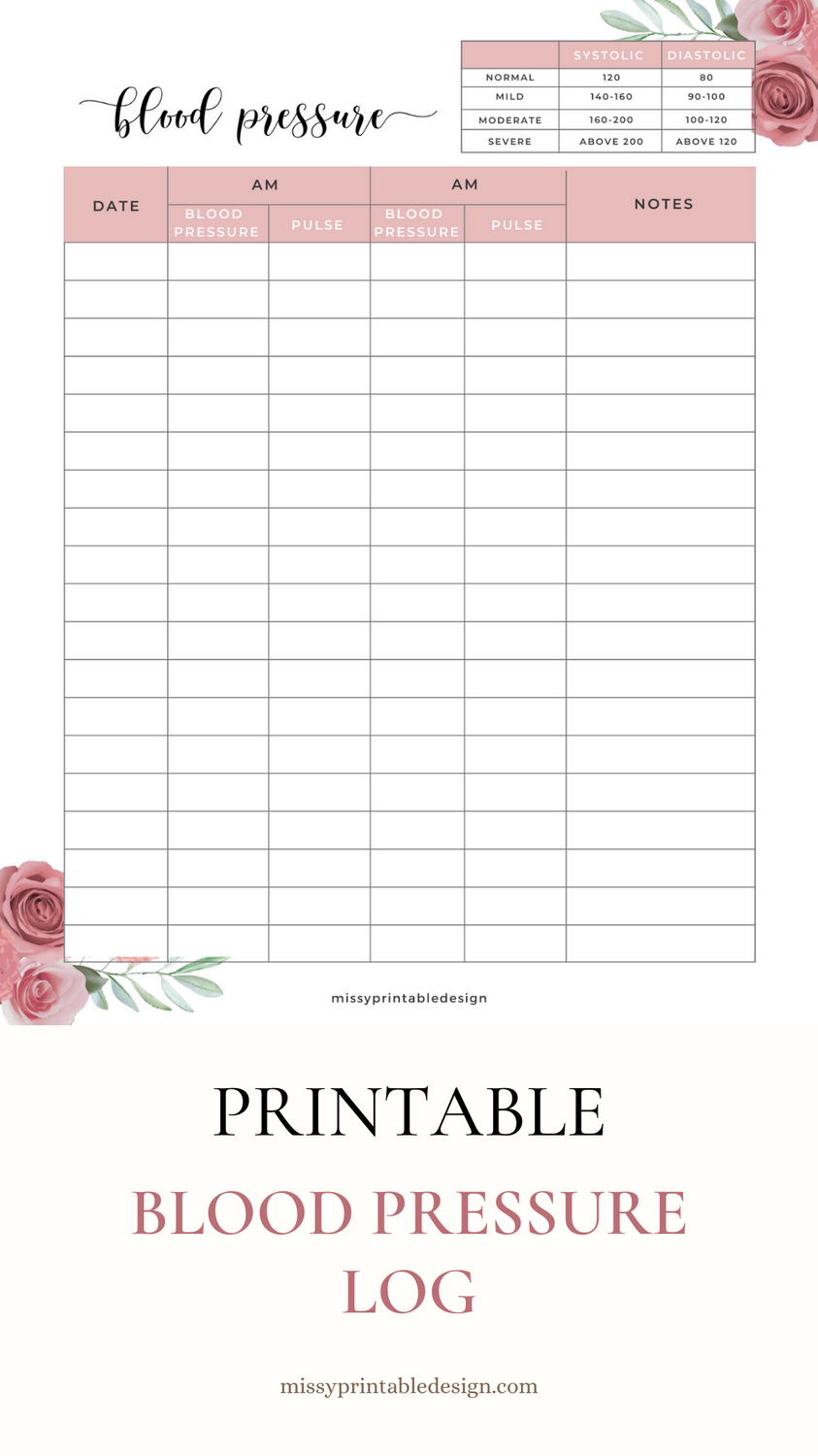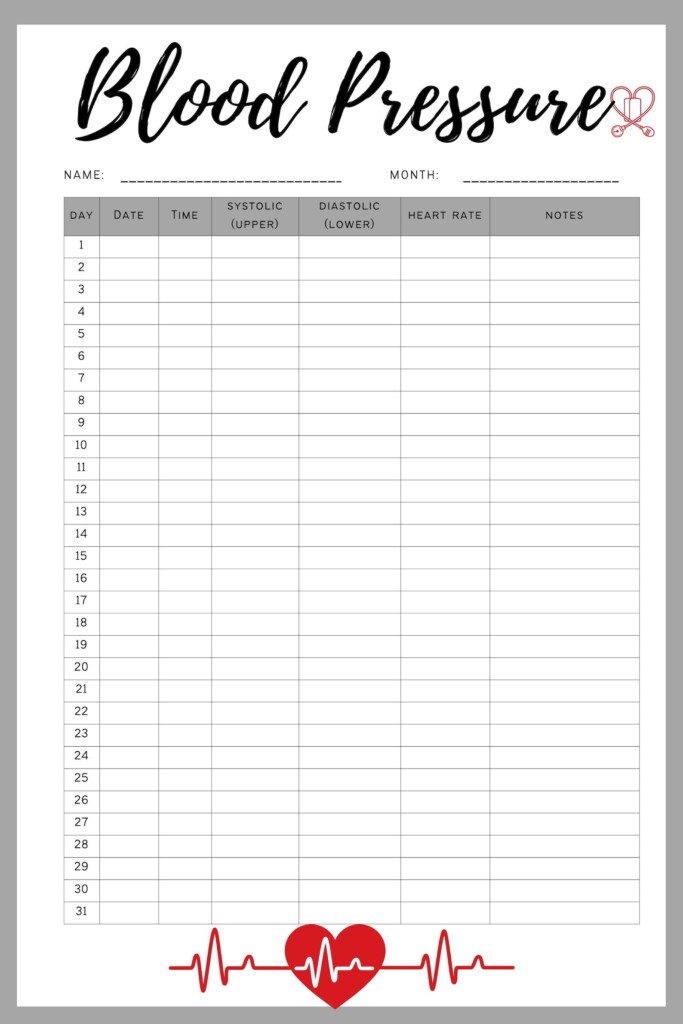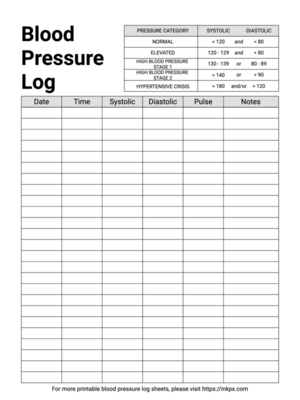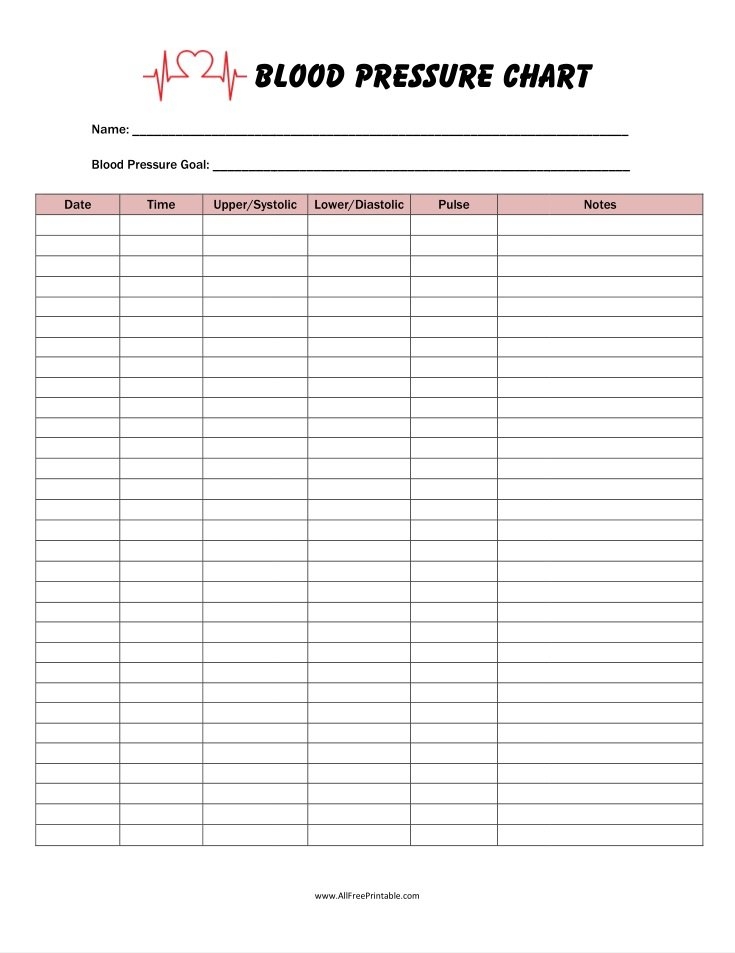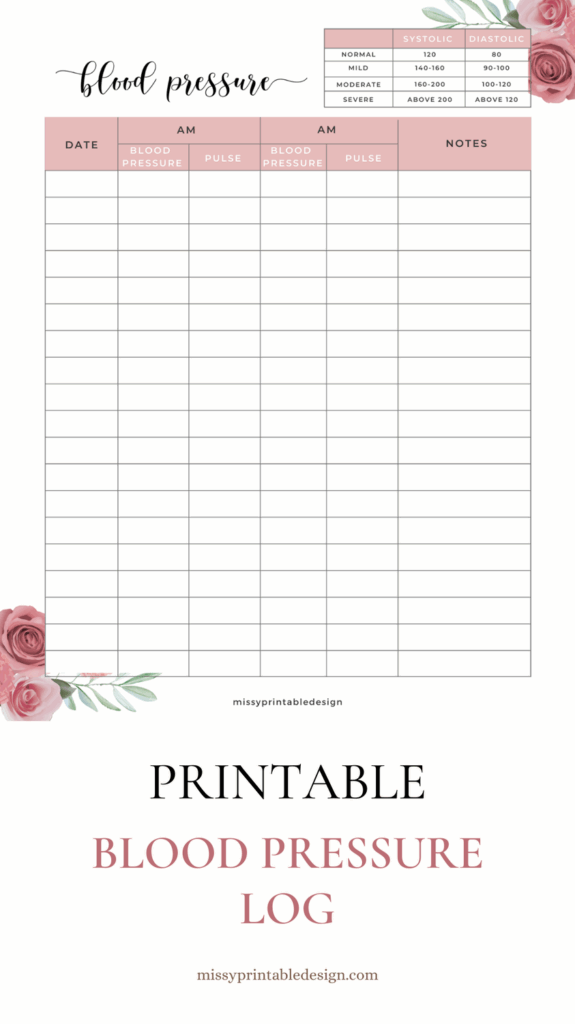A blood pressure log is a tool used to track and monitor blood pressure readings over time. It typically includes spaces to record the date, time, blood pressure readings (both systolic and diastolic), and any notes or comments related to the reading. Keeping a blood pressure log can help individuals and healthcare providers identify trends, track progress, and make informed decisions about managing blood pressure.
For those looking to monitor their blood pressure at home, having a blood pressure log can be incredibly beneficial. By regularly recording blood pressure readings, individuals can better understand their blood pressure patterns and potentially identify any fluctuations or abnormalities that may require further attention.
Why Use a Free Printable Blood Pressure Log?
Using a free printable blood pressure log can make it easier for individuals to consistently track their blood pressure readings. These printable templates are often designed with user-friendly layouts, making it simple to input and organize data. Additionally, having a physical log that can be printed and filled out manually can be convenient for those who prefer a tactile method of record-keeping.
Free printable blood pressure logs are also easily accessible, making them a cost-effective option for individuals who want to monitor their blood pressure without investing in specialized tracking devices or software. With a variety of designs and formats available online, users can choose a blood pressure log template that suits their preferences and needs, whether they prefer a basic layout or a more detailed tracking system.
How to Use a Free Printable Blood Pressure Log
1. Choose a template: Select a free printable blood pressure log template that meets your tracking needs and preferences. Consider factors such as layout, design, and additional features (such as space for notes or medication tracking).
2. Print the log: Once you have chosen a template, print out multiple copies of the blood pressure log to use for recording readings. You may want to consider keeping a few extra copies on hand for future use.
3. Record readings: Fill in the designated spaces on the blood pressure log with the date, time, systolic and diastolic blood pressure readings, and any relevant notes or comments. Be consistent in recording readings to track patterns accurately.
4. Monitor trends: Regularly review your blood pressure log to identify any trends or changes in your readings. Share your log with your healthcare provider during check-ups or appointments to discuss your blood pressure management.
By utilizing a free printable blood pressure log, individuals can take proactive steps towards managing their blood pressure and promoting overall health and well-being. Whether used for personal tracking or in conjunction with healthcare professionals, a blood pressure log can be a valuable tool in maintaining optimal blood pressure levels.
